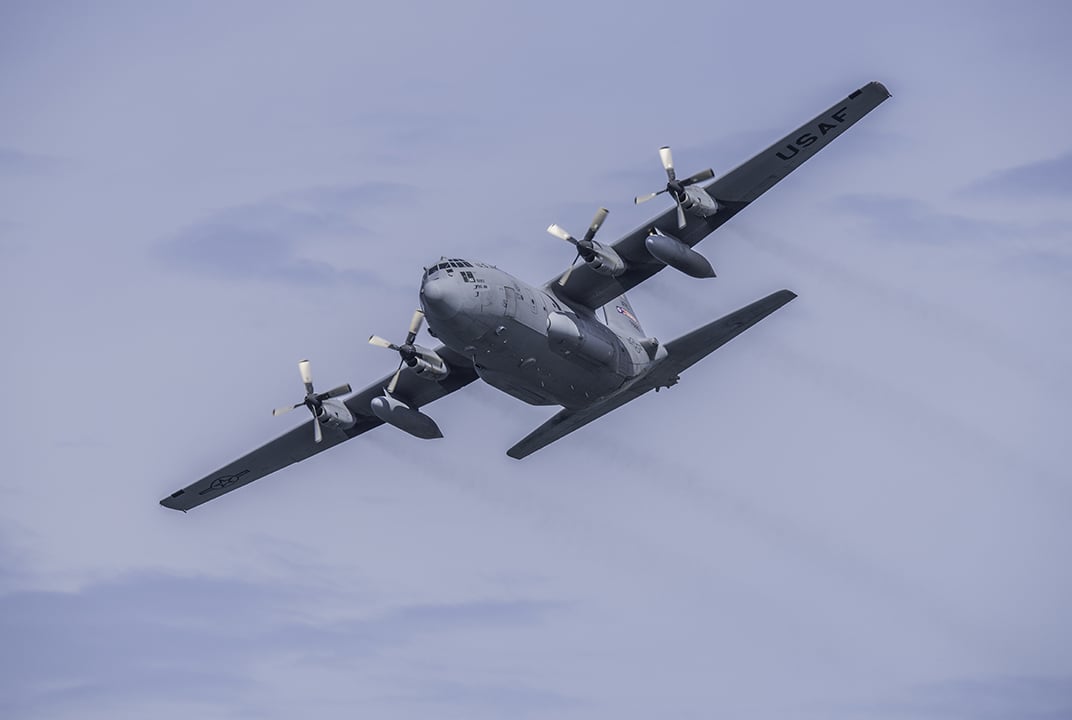Insight | Ushering in the Next Age of Innovation in Space
Ushering in the Next Age of Innovation in Space
Government
Rebecca M. Cowen-Hirsch, Inmarsat Senior Vice President for Government Strategy and Policy, U. S. Government Business Unit, on how proposed space policy shifts could empower military users with unprecedented SATCOM services and solutions.
In October 2015, the Department of Defense (DoD) assigned to Secretary of the Air Force Deborah Lee James an expanded leadership role, designating her as principal DoD space adviser (PDSA). Previously holding the title of executive agent for space (EA4S), James will now seek to bring more cohesion to the current state of space acquisitions, chairing the Defense Space Council (DSC) while delivering recommendations to the DSC on space issues. She will also provide independent assessments and proposals to Deputy Secretary of Defense Robert Work’s management action group when the DSC cannot reach a consensus on decisions.
James is expected to emerge as the top advisor for space, with the potential to usher in a new era of strategic focus. “My priority is to ensure a properly funded strategy that allows for innovation across the DoD space portfolio, enabling us to meet the challenges of a rapidly changing environment,” she said, as her appointment was announced. Our nation’s pursuits in space have always been about innovation. However, it is clear that a new wave of advancements impacting space and satellite communications (SATCOM) – all in the interest of supporting military users – is upon us.
The PDSA announcement follows a number of other intriguing developments, including the July 2015 Government Accountability Office (GAO) “Defense Satellite Communications” report, which recommended that the DoD conduct a spending analysis to identify SATCOM procurement inefficiencies and opportunities, while evaluating whether greater centralization of commercial SATCOM (COMSATCOM) would benefit the DoD. Currently, procurement of military satellite communications (MILSATCOM) and COMSATCOM are hindered due to a lack of awareness of what is spent on COMSATCOM and a resistance to centralization of SATCOM acquisitions, according to the GAO.
In the same month, General John Hyten, Commander of U.S. Air Force Space Command, issued an “Intent on (Ongoing Material) Decisions” memorandum in which he wrote that even the newest space systems “lack required resiliency and survivability. We must retool our entire space architecture to one that can be commanded through a robust common ground platform.” The Wideband Global SATCOM (WGS) satellite bus operations should move to commercial operators performing satellite control – possibly from commercial facilities and with the commercial satellite control network – “as soon as possible within contract constraints,” Hyten wrote.
In addition, he called for the evaluation of all legacy constellation satellite operations for possible transfer to commercial operators and the commercial network, or to a common enterprise ground solution. “We must weigh both the impact of repurposing Airmen for mission operations and return on investment,” according to the memo.
New developments follow these actions in 2016: The fiscal year 2016 National Defense Authorization Act (NDAA), for example, is paving the way for an ambitious overhaul of wideband SATCOM acquisition. No later than one year after its enactment, the act requires the congressional defense committees to submit an acquisition consolidation plan. The plan must include a detailed cost assessment of COMSATCOM services, to include projected costs savings of such a consolidation. In addition, the act calls for the Secretary of Defense to designate a single, senior DoD official to procure wideband SATCOM, while approving of a pilot program through which the Secretary of Defense would deploy a variety of methods to “effectively and efficiently acquire commercial satellite communications services.” In addition, the Secretary of Defense shall conduct an analysis of alternatives (AoA) for a follow-on wide-band communications system to the Wideband Global SATCOM System that includes space, air and ground layer communications capabilities of the DoD, not later than March 31, 2017.
Furthermore, Winston Beauchamp, Deputy Under Secretary of the Air Force for Space, and the Director, Principal DoD Space Advisor Staff and Maj. Gen. Roger Teague, Director, Space Programs, Office of the Assistant Secretary for Acquisition hosted a meeting with satellite industry representatives to engage industry in dialogue to help shape the Wideband AoA. While in response to congressional encouragement to consult with industry, the Air Force expressed a keen interest in not repeating the mistakes of the Protected SATCOM AoA and intends to bring industry into the analysis to determine the right way forward rather than just buying more DoD owned satellite assets. This is a significant recognition of the agility and capability satellite operators bring to the military’s operational picture. As part of this analysis, the Air Force is also exploring different business relationships with the SATCOM suppliers than the historical and dated transponder leasing of years past. Inmarsat’s Satellite as a Service model is ideally suited for the type of business models the government is exploring and leans forward to a future mutually beneficial arrangement that adds greater efficiencies and responsiveness to the DoD than antiquated fixed leases.
Smarter Investments through SATCOM as a Service
At Inmarsat, we work every day with government agencies to maximize the ROI of their satellite investments. This requires, however, that the government steers away from commoditized pricing incentives and incorporates performance and value based acquisition strategies– especially when SATCOM-as-a- Service allows them to acquire superior coverage, capabilities, reliability, capacity, resiliency and security, at an extremely competitive cost.
Through SATCOM as a Service, federal customers take advantage of integrated, complex solutions within an end-to-end managed services architecture. Opportunities abound for enhanced innovation, as SATCOM as a Service empowers military units with more robust and globally accessible functionalities. Among the many value distinguishers:
- Mission assurance. The command link is encrypted, verifying that there is only one trusted operator in control of the satellite. With increasing concerns about what the Council on Foreign Relations has described as “malicious and destabilizing actions toward U.S. space assets,” the integrity of the command link proves essential. Thanks to the SATCOM as a Service capability, ground station connections are secured as well, with every point of presence authenticated in trusted locations. Meanwhile, vigilant network protection mitigates risk while safeguarding the enterprise.
- Interoperability. With SATCOM as a service, troops access satellite on-demand with round-the-clock availability of transponders, equipment terminals, backhaul, capacity and features. When MILSATCOM Ka-band service is not available, users can switch to commercial Ka-band using their existing terminals. Seamless interoperability with the Wideband Global SATCOM (WGS) network includes international allies and partners — making it even more robust. This saves on costs by streamlining the use of equipment, while allowing military users to readily switch between government systems and private-sector infrastructure on the same hardware, opting for what is best suited for their mission.
- Global coverage. Troops must stand ready to go to all regions of the world, on a moment’s notice. Because the location and timing are often unpredictable, their SATCOM-supplied bandwidth has to be portable enough to guarantee total availability with seamless reliability.
- Performance dedication. With a committed information rate (CIR), customers obtain highly dependable data performance. They no longer resign themselves to “best available” packages which frequently result in degraded connections when user demand spikes and/or satellite coverage is less than optimal. With a CIR, you will get no less than the throughput you paid for.
It is, indeed, a new era for the DoD and space. It is an era of uncertainty, as we cannot fully know the intent of our enemies, just as we cannot predict when and where the next natural disaster will compel our humanitarian assistance. It is also an age of opportunity to push SATCOM innovation to extraordinary levels of performance, as industry leaders work with government agencies to augment MILSATCOM with ideal coverage, capabilities, reliability, capacity, resiliency and security. With this, the military community will best position itself to prepare for any challenge, with completely secured access to the space assets needed to get the job done.
About the author
Rebecca M. Cowen-Hirsch is Inmarsat Senior Vice President for Government Strategy and Policy in the United States Government (USG) Business Unit, based in Washington. Ms. Cowen-Hirsch brings 25 years of defense, aerospace, and executive leadership experience to Inmarsat. As a decorated member of the Senior Executive Service (SES) in the U.S. Department of Defense, she served as the Program Executive Officer for SATCOM, Teleport and Services at the Defense Information Systems Agency (DISA) and in several key SES executive positions including the first Vice Component Acquisition Executive for DISA, with executive management responsibility for the acquisition oversight and horizontal integration of DISA’s products, services, and programs. Ms Cowen-Hirsch established the Defense Spectrum Office, serving as its first Director where her responsibilities included the development of national security spectrum strategic plans and policy, and national and international negotiation of defense spectrum issues. Her broad defense career ranged from systems engineering, experimental flight test, program management, spectrum management, and a wide range of executive leadership positions. Ms. Cowen-Hirsch was a rated experimental flight test engineer; was the first female civilian Mission Commander for the Advanced Range Instrumentation Aircraft (ARIA) mission, and was the recipient of an Exemplary Service Medal for her years of selfless service to the Department of Defense. Ms Cowen-Hirsch has a Bachelor of Science Degree in Electrical Engineering, conducted post-graduate studies in Engineering Management, and is a graduate of the University of Tennessee Space Institute Experimental Flight Test Program; the DoD’s Acquisition Management Program; and the Cambridge Senior Executive Leadership Program.


